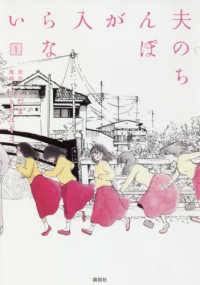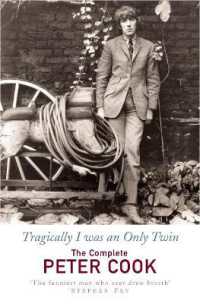- ホーム
- > 洋書
- > 英文書
- > History / World
Full Description
The vast transformation of the Roman world at the end of antiquity has been a subject of broad scholarly interest for decades, but until now no book has focused specifically on the Iberian Peninsula in the period as seen through an archaeological lens. Given the sparse documentary evidence available, archaeology holds the key to a richer understanding of the developments of the period, and this book addresses a number of issues that arise from analysis of the available material culture, including questions of the process of Christianisation and Islamisation, continuity and abandonment of Roman urban patterns and forms, the end of villas and the growth of villages, and the adaptation of the population and the elites to the changing political circumstances.
Contents
INTRODUCTION: AN ARCHAEOLOGICAL PERSPECTIVE ON LATE ANTIQUE AND EARLY MEDIEVAL IBERIA, PART I: LATE ROMAN HISPANIA, 1. The transformations of Roman Hispania: 4th-5th c., 2. New townscapes in the late Empire, 3. Landscape and rural settlements, 4. Christianization and Germanization? New evidence for current debates, PART II: THE POST-ROMAN PERIOD (450-711), 5. Towns and cities under Christian prevalence, 6. The new rural landscape, 7. A new material culture and how to understand politics, society and economy, PART III: TOWARDS THE MIDDLE AGES (711-850), 8. The formation of a new culture based on tradition and innovation, 9. The consolidation of new political spheres: New urbanism, 10. Changing landscapes and rural settlements






